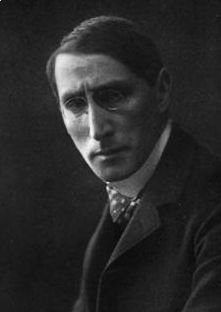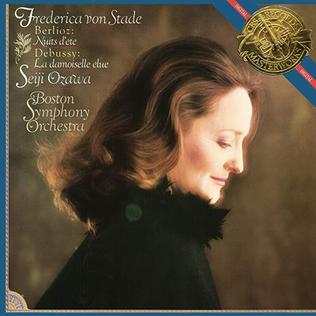Related Research Articles

In music, an arrangement is a musical adaptation of an existing composition. Differences from the original composition may include reharmonization, melodic paraphrasing, orchestration, or formal development. Arranging differs from orchestration in that the latter process is limited to the assignment of notes to instruments for performance by an orchestra, concert band, or other musical ensemble. Arranging "involves adding compositional techniques, such as new thematic material for introductions, transitions, or modulations, and endings. Arranging is the art of giving an existing melody musical variety". In jazz, a memorized (unwritten) arrangement of a new or pre-existing composition is known as a head arrangement.

Orchestration is the study or practice of writing music for an orchestra or of adapting music composed for another medium for an orchestra. Also called "instrumentation", orchestration is the assignment of different instruments to play the different parts of a musical work. For example, a work for solo piano could be adapted and orchestrated so that an orchestra could perform the piece, or a concert band piece could be orchestrated for a symphony orchestra.
A symphonic poem or tone poem is a piece of orchestral music, usually in a single continuous movement, which illustrates or evokes the content of a poem, short story, novel, painting, landscape, or other (non-musical) source. The German term Tondichtung appears to have been first used by the composer Carl Loewe in 1828. The Hungarian composer Franz Liszt first applied the term Symphonische Dichtung to his 13 works in this vein, which commenced in 1848.
A song cycle is a group, or cycle, of individually complete songs designed to be performed in sequence, as a unit.

Joseph Joachim Raff was a German-Swiss composer, pedagogue and pianist.

Dietrich Fischer-Dieskau was a German lyric baritone and conductor of classical music. One of the most famous Lieder performers of the post-war period, he is best known as a singer of Franz Schubert's Lieder, particularly "Winterreise" of which his recordings with accompanists Gerald Moore and Jörg Demus are still critically acclaimed half a century after their release.

Elisabeth Sara "Elly" Ameling is a Dutch soprano, who is particularly known for lieder recitals and for performing works by Johann Sebastian Bach. Performing with distinguished pianists and ensembles around the globe, she was awarded various honours and recording prizes.
A funeral march, as a musical genre, is a march, usually in a minor key, in a slow "simple duple" metre, imitating the solemn pace of a funeral procession. Some such marches are often considered appropriate for use during funerals and other sombre occasions, the best-known example being the third movement of Chopin's Piano Sonata No. 2. Handel uses the name dead march, also used for marches played by a military band at military funerals.
Jan (Janice) DeGaetani was an American mezzo-soprano known for her performances of contemporary classical vocal compositions.
Des Knaben Wunderhorn is a series of songs with music by Gustav Mahler, set either for voice and piano, or for voice and orchestra, based on texts of German folk poems chosen from a collection of the same name assembled by Achim von Arnim and Clemens Brentano and published by them, in heavily redacted form, between 1805 and 1808.
Soile Marja Isokoski is a Finnish lyric soprano, active in opera, concert works and lieder.

Les nuits d'été, Op. 7, is a song cycle by the French composer Hector Berlioz. It is a setting of six poems by Théophile Gautier. The cycle, completed in 1841, was originally for soloist and piano accompaniment. Berlioz orchestrated one of the songs in 1843, and did the same for the other five in 1856. The cycle was neglected for many years, but during the 20th century it became, and has remained, one of the composer's most popular works. The full orchestral version is more frequently performed in concert and on record than the piano original. The theme of the work is the progress of love, from youthful innocence to loss and finally renewal.

The French composer Hector Berlioz made four attempts at winning the Prix de Rome music prize, finally succeeding in 1830. As part of the competition, he had to write a cantata to a text set by the examiners. Berlioz's efforts to win the prize are described at length in his Memoirs. He regarded it as the first stage in his struggle against the musical conservatism represented by the judges, who included established composers such as Luigi Cherubini, François-Adrien Boieldieu and Henri-Montan Berton. Berlioz's stay in Italy as a result of winning the prize also had a great influence on later works such as Benvenuto Cellini and Harold en Italie. The composer subsequently destroyed the scores of two cantatas almost completely and reused music from all four of them in later works. There was a revival of interest in the cantatas in the late 20th century, particularly Cléopâtre, which has become a favourite showcase for the soprano and mezzo-soprano voice.

Oskar Fried was a German conductor and composer. He was known as a great admirer of Gustav Mahler, whose works he performed many times throughout his life. Fried was also the first conductor to record a Mahler symphony. He held the distinction of being the first foreign conductor to perform in Russia after the Bolshevik Revolution (1922). He eventually left his homeland in 1933 to work in the Soviet Union after the political rise of Adolf Hitler's Nazi Party, and became a Soviet citizen in 1940.

Nancy Fabiola Herrera is a Canarian mezzo-soprano opera singer. Born in Venezuela to Canarian parents, Herrera is the recipient of the "Best Zarzuela Singer of 2007" award presented by the Fundación Premios Liricos Teatro Campoamor, for her performance in Ruperto Chapí's La Bruja.
Les nuits d'été, Op. 7, is a song cycle by the French composer Hector Berlioz, setting six poems by Théophile Gautier. The cycle, completed in 1841, was originally for soloist and piano accompaniment. Berlioz orchestrated one of the songs in 1843 and did the same for the other five in 1856. The cycle was neglected for many years, but during the 20th century it became, and has remained, one of the composer's most popular works. Of the many recordings made in the 20th and 21st centuries, most are of the orchestrated version and are sung by a soprano or mezzo-soprano.

Nuits d'été & La damoiselle élue is a 51-minute studio album of songs by Hector Berlioz and a cantata by Claude Debussy performed by Frederica von Stade, Susanne Mentzer, the Tanglewood Festival Chorus and the Boston Symphony Orchestra under the direction of Seiji Ozawa. It was released in 1984.
The following lists note recordings in opera and recital of soprano Jessye Norman.

Ria Bollen is a Flemish contralto, who had an international career as a concert singer between 1965 and 1992. Her broad repertoire included Bach's Passions, Mozart's Requiem, Beethoven's Missa solemnis, especially works by Gustav Mahler and works of the 20th century. She was the soloist in the world premiere of Frank Martin's Requiem. She sang many art songs, including by Belgian composers.
References
- ↑ The Song Cycle, p. 64, Laura Tunbridge (2011). "The orchestral song has a complicated genealogy. There were ... In order to hold their own against the larger-scale works, Lieder needed to be amplified; automatically achieved through the addition of instrumental accompaniment. This would ..."
- ↑ The Liszt Companion, p. 433, Ben Arnold (2002). "Szitha concluded, "Though Le juif errant was never published and Jeanne d'Arc only in a late 1874 variant, the two pieces bear out that back in the latter half of the 1840s Liszt was already experimenting with the genre of the orchestral song."
- ↑ German Lieder in the Nineteenth Century, p. 299. Rufus E. Hallmark (2010). "It is often said that with the Lieder eines fahrenden Gesellen Mahler established the genre of the orchestral song cycle, but it was an idea whose time was certainly ripe, ..."
- ↑ San Francisco Symphony playbill, San Francisco Symphony Orchestra (1999). "The genre of the orchestral song came into vogue throughout Europe in the years just before the turn of the century. Mahler, who gave such compositions the full stature of symphonic movements, provides the most spectacular examples, but French composers were quite as enthusiastic. Often their melodies were composed all-but-simultaneously in two ..."
- ↑ Jean Sibelius, p. 311, Tomi Mäkelä (2011). "Sibelius' sole significant contribution to the orchestral song – a fashionable genre at the turn of the century, prominently represented by Gustav Mahler – was Luonnotar. a setting of erik Johan Stagnelius' 'Serenad' for baritone and orchestra "
- ↑ The Song Cycle, p. 64, Laura Tunbridge (2011). "This would be one way to explain the genesis of what is sometimes called the first orchestral song cycle, but is perhaps better seen as one of its progenitors: Hector Berlioz's Les Nuits d'été (Summer Nights), composed for voice and piano in .."
- ↑ The Cambridge History of Nineteenth-Century Music, p. 164, Jim Samson (2001). "These songs were later orchestrated, and are sometimes claimed as the first orchestral song cycle.10 Berlioz's achievement, even in the original versions with piano, was to integrate poem, voice and instruments into a homogeneous texture."
- ↑ Musorgsky, in memoriam, 1881–1981, p. 221, Malcolm Hamrick Brown (1982). "Shostakovich's late style has been characterized as austere, economical, sparse, and "archaic"-sounding. ... works such as the Thirteenth (1962) and Fourteenth Symphonies can be perceived more readily as orchestral song cycles, than as ."
- ↑ Martinů and the Symphony, p. 462, Michael Crump (2010). "In 1932, Martinů received a request from the singer Magdalena Mateˇjovská for a song from his early orchestral song-cycle Magic Nights. He reworked the central number from the cycle for alto and piano, transposing it down a fourth and ..."